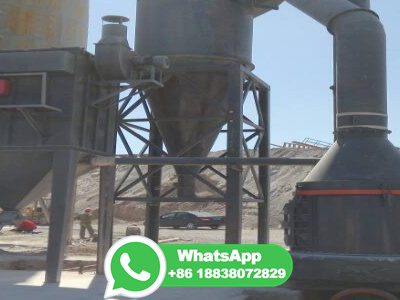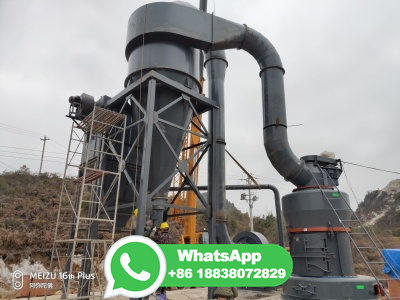
With the new standards now available, the CEM I content in concrete can be replaced with up to 20 per cent of limestone powder, a product widely available in the UK. For every 5 per cent of limestone powder added, a 5 per cent CO 2 reduction can be delivered per tonne of concrete, according to MPA UK Concrete, the group representing the UK ...
WhatsApp: +86 18203695377
The extensive usage of concrete and ordinary Portland cement has generated 5~8% of annual global CO2 emissions, causing serious environmental problems. To reduce such environmental impact, researchers have made significant efforts to develop alternative materials that may partially or entirely replace the ordinary Portland cement, such as limestone calcined clay cement (LC3). LC3 has not been ...
WhatsApp: +86 18203695377
The particle size distribution of fine and coarse aggregate by ... (2018) Hydration, shrinkage, and durability of ternary binders containing Portland cement, limestone filler and metakaolin. Constr Build Mater 183:114126 ... Le Saout G et al (2011) Hydration mechanisms of ternary Portland cements containing limestone powder and fly ash. Cem ...
WhatsApp: +86 18203695377
It was developed from other types of hydraulic lime in England in the early 19th century by Joseph Aspdin, and is usually made from limestone. It is a fine powder, produced by heating limestone and clay minerals in a kiln to form clinker, grinding the clinker, and adding 2 to 3 percent of gypsum. Several types of portland cement are available.
WhatsApp: +86 18203695377
limestone powder are presented in Table 3 and ... specimens are classified by the concrete mix design while limestone fines with a weight percentage of 10 and 15 % of
WhatsApp: +86 18203695377
The limestone is fired in a kiln at the same low temperatures, °C, which are used for firing hydraulic lime. The calcium in the limestone combines with the aluminosilicates in the clay to form hydraulic minerals. 8 After firing the calcined rock is ground into a fine powder, unlike lime, natural cement cannot be slaked.
WhatsApp: +86 18203695377
Revised version of BS 8500. 5 Dec 2023. On 30 November 2023, BS 85001:2023 and BS 85002:2023 were published. This change to the standard increases the range of lower carbon concretes that can be specified. Since the 1980s, the UK experience of using supplementary cementitious materials (SCMs) has been combining Portland cement (CEM I) with ...
WhatsApp: +86 18203695377
Adding limestone fines as replacement can reduce • • Abstract The addition of limestone fines to fill into the voids between aggregate particles can reduce the volume of voids to be filled with cement paste and thus reduce the cement paste volume needed to produce concrete.
WhatsApp: +86 18203695377
Crushed limestone powder is primarily used in road construction and civil engineering, as well as in the building materials industry, the concrete industry and for sett paving. ... The limestone rock obtained by blasting is crushed and then sized and washed to produce fine limestone. The maximum content of settleable solids is precisely defined ...
WhatsApp: +86 18203695377
The addition of fine inert limestone powder, whose surface area was greater than that of the clinker, increased the hydration rate at early age and the generated heat of hydration [5]. However, the final strength of the blended cement after 28 days was less than that of the original cement paste.
WhatsApp: +86 18203695377
Ternary blended cements, such as limestone calcined clay cement (LC3), represent a type of strategic binder for the mitigation of environmental impacts associated with cement production. These are estimated to reduce CO2 emissions by about 40% compared to ordinary Portland cement (OPC). In this paper, we explore the possibility of producing such ternary blends by utilizing secondary raw ...
WhatsApp: +86 18203695377
It was created in the 19th century from various types of hydraulic lime, and is typically made out of limestone. Portland Cement is formed by heating limestone and clay minerals in a kiln. This process forms clinker, a solid material, and is then ground and mixed with about 2 to 3 percent gypsum to create a fine powder.
WhatsApp: +86 18203695377
This study compares the influence of two limestone fineness on strength development and cement hydration. The replacement of clinker by 20% of fine limestone (d v,50 = 2 μm and SSA = 4,21 m 2 /g) gives similar strength development to PC up to 7 days. Fine limestone enhances cement hydration and offsets the dilution effect caused by the decrease of clinker amount.
WhatsApp: +86 18203695377
Limestone (calcium carbonate, CaCO3) has long been a critical component of concrete, whether as the primary raw material for cement production, a fine powder added to the binder component, or a ...
WhatsApp: +86 18203695377
Limestone Fines. Per Yard. This crushed limestone is similar in consistency to 2NS sand (or slag). It is an excellent material for a leveling course under pavers and makes a nice filler around flagstone and in pathways.
WhatsApp: +86 18203695377
The results indicated that, the residual compressive and flexural strength of 10 and15 % limestone fines as additive to cement content by mass are generally higher than those of convention ...
WhatsApp: +86 18203695377
Abstract. Limestone powder (LS) is one of the mineral materials in concrete due to its wide availability and low cost. This paper discusses effects of LS on the workability, setting time, shrinkage, mechanical properties and durability of concrete. Such effects are mainly influenced by many factors, including the particle size and content of LS ...
WhatsApp: +86 18203695377
The first group included Portland cement CEM I N, limestone powder and BFS. The mix proportion of a standard ECC mixture M45 (Table 2) is used as a reference in the ECC mix design. Table 3 gives the mix proportion of the ECC mixtures mixed with the first group of matrix materials. The second group included BFS cement and limestone powder.
WhatsApp: +86 18203695377
Cement production begins with limestone, a sedimentary rock. Once quarried, it is mixed with a silica source, such as industrial byproducts slag or fly ash, and gets fired in a kiln at 2,700 degrees Fahrenheit. What comes out of the kiln is called clinker. Cement plants grind clinker down to an extremely fine powder and mix in a few additives.
WhatsApp: +86 18203695377
In order to ready the limestone for use in cement, place it in a kiln or outdoor wood oven. Turn the kiln up to 900 °C (1,650 °F), and ... Put on a pair of work gloves and use your hands to crumble the cooled limestone into a fine powder. The resulting powder is cement, which you can mix with water, sand, and gravel to make concrete.
WhatsApp: +86 18203695377
Optimal amount of limestone finest powder as a partial replacement of cement is 1718 %. Although limestone powders insignificantly reduced the compressive strengths of concretes when they were used to replace cement without compensation of the amount of water, full strains are apparently lower for the specimens with limestone filler.
WhatsApp: +86 18203695377
Limestone fines Chemical shrinkage Drying shrinkage Autogenous shrinkage Expansion Mortars 1. Introduction Shrinkage is a permanent characteristic of concrete, existing both in the fresh and hardened stages. Concrete is prone to crack due to shrinkage that affects its longterm durability and serviceability.
WhatsApp: +86 18203695377
This work aimed to study the performance of ground white and brown chicken eggshell waste powders as potential replacements of conventional quarried limestone in Portland cement mortars. A processing method to produce large quantities of eggshells was developed. Limestone amounts of 0%, 5%, 10%, 15% and 20% by weight were added as Portland ...
WhatsApp: +86 18203695377
In this study, sustainable engineered cementitious composites (ECC) exhibiting high tensile strength as well as high tensile strain capacity were successfully developed by incorporating polyethylene (PE) fiber, local recycled fine aggregate (RFA), and limestone calcined clay cement (LC3). The improvement in tensile strength and tensile ductility was attributed to the selfcementing properties ...
WhatsApp: +86 18203695377
In the context of energy consumption and the decarbonization process applied in the conversion of limestone ... Also, Karaaslan et al. replaced the calcium aluminate cement (CAC) by pumice comprising up to 20% of the entire powder binder, and they noted the enhanced abrasion resistance of geopolymer concretes (PGCs) made with 30 wt.% of FA and ...
WhatsApp: +86 18203695377
Cement is made by grinding clinker—the main energy intensive ingredient—to a fine powder. Producers know that replacing some of the clinker in portland cement with ground limestone offers benefits, the most important being that it reduces the embodied CO2 of the cement.
WhatsApp: +86 18203695377
Increasing fineness of limestone powder improves the growth rates of strength and chemical bound water content, and higher compressive strength and chemical bound water content are obtained.
WhatsApp: +86 18203695377
The History of Portland Cement. Cement as we know it was first developed by Joseph Aspdin, an enterprising 19thcentury British stonemason, who heated a mix of ground limestone and clay in his kitchen stove, then pulverized the concoction into a fine powder. The result was the world's first hydraulic cement: one that hardens when water is added.
WhatsApp: +86 18203695377
Thus, in this study, the effects of the fineness and replacement of limestone powder on the hydration and strength properties of concrete were investigated by Xray diffraction (XRD), setting times, isothermal calorimetry, compressive strength and mercury intrusion porosimetry techniques.
WhatsApp: +86 18203695377
The basic formula to make concrete is 1 part cement, 2 parts sand and 3 parts aggregate by volume. Finally add water as needed. The stone should be between a 1/2 inch to an inch with rounded sides. Don't use aggregate that's jagged or too large because it makes the concrete hard to form.
WhatsApp: +86 18203695377